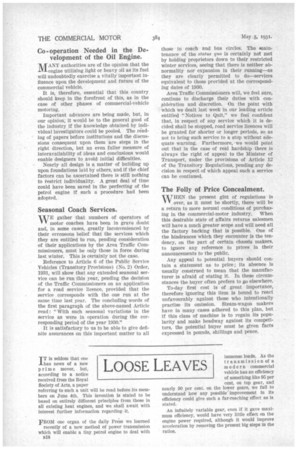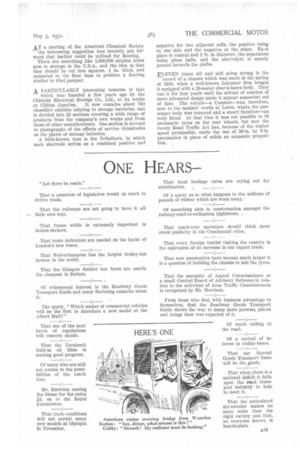LOOSE LEAVES
Page 36

Page 37

If you've noticed an error in this article please click here to report it so we can fix it.
IT is seldom that one has news of a new prim e mover, but, according to a notice received from the Royal Society of Arts, a paper referring to such a unit will be read before its members on June 4th. This invention is stated to be based on entirely different principles from those in all existing heat engines, and we shall await with interest further information regarding it.
FROAI one organ of the daily Press we learned recently of a new method of power transmission which will enable a tiny petrol engine to deal with n18 immense loads. As the transmission of a in commercial vehicle has an efficiency of something like 95 per cent, on top gear, and nearly 90 per cent. on the lower gears, we fail to understand how any possible' improvement in its efficiency could give such a far-reaching effect as is stated.
An infinitely variable gear, even if it gave maximum efficiency, would have very little effect on the engine power required, although it would improve acceleration by removing the present big steps in the ratios. AT a meeting of the American Chemical Society the interesting suggestion was recently put forward that leather could be utilized for flooring.
There are something like 1,000,000 surplus hides now in storage in the U.S.A., and the idea is that they should be cut into squares, in. thick, and cemented to the floor base to produce a flooring similar to tiled parquet.
PARTICULARLY interesting museum is that which was founded a few years ago by the Chloride Electrical Storage Co., Ltd., at its works at Clifton Junction. It now contains about 700 classified exhibits relating to storage batteries, and is divided into 23 sections covering a wide range of products from the company's own works and from those of other manufacturers. One section is devoted to photographs of the effects of service vicissitudes on the plates of storage batteries.
A little-known type is the Tribelhorn, in which each electrode serves as a combined positive and negative for two adjacent cells, the positive being at one side and the negative at the other. Each plate is conical and 2 ft. in diameter, the separators being glass balls, and the electrolyte is merely poured between the plaees.
ELEVEN years old and still going strong is the record of a chassis which was made in the spring of 1920, when a well-known Leicester firm bought it equipped with a 28-seater char-k-bancs body. They ran it for four yeafs until the advent of coaches of more advanced design made it appear somewhat out of date. The vehicle—a 'Commer—was, therefore, sent to the makers' works at Luton, where the passenger body was removed and a smart furniture-van body fitted. At that time it was not possible to fit pneumatic tyres on the rear wheels, but now the recent Road Traffic Act has, because of the higher speed permissible, made the use of 36-in. by 6-in. pneumatics in place of solids an economic proposition.




































































































